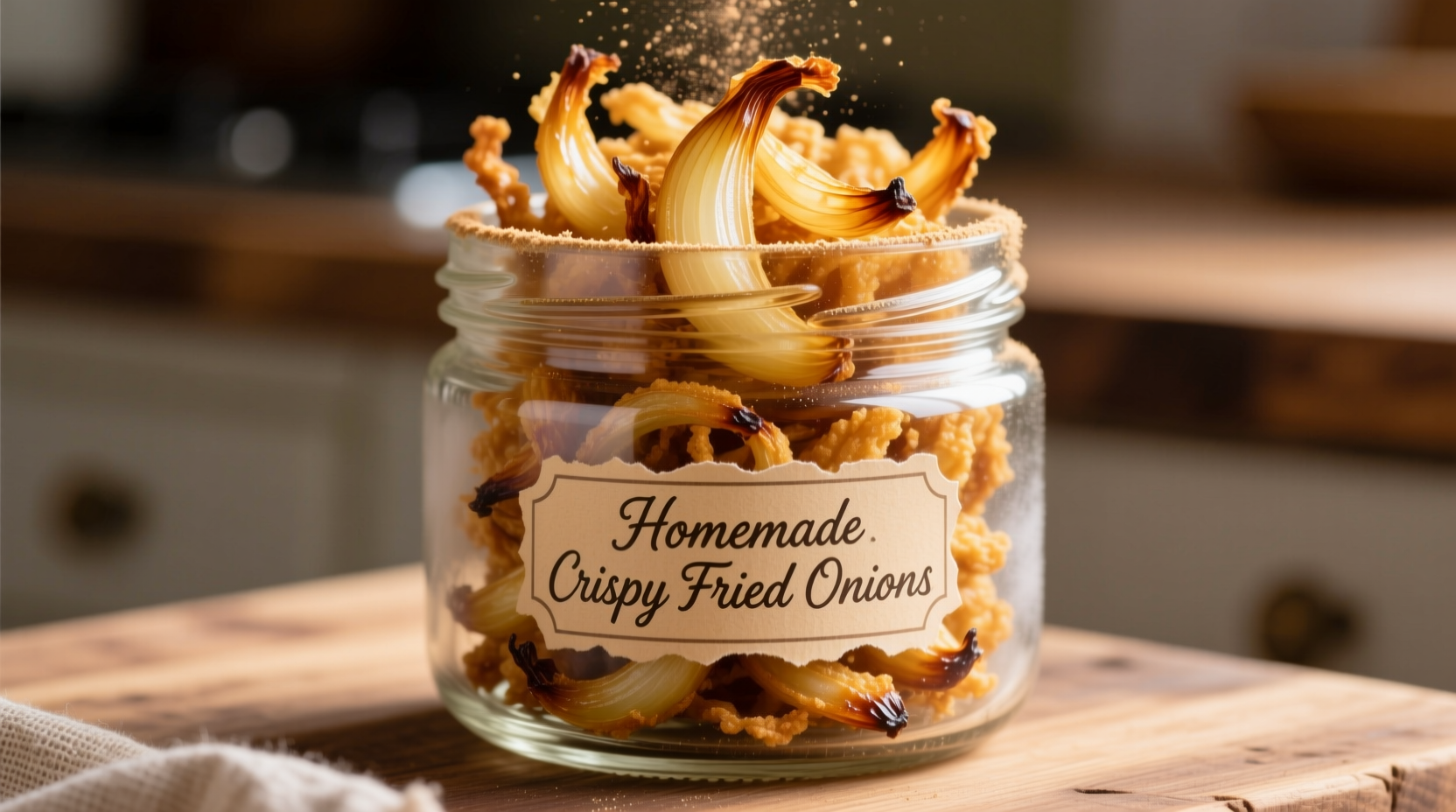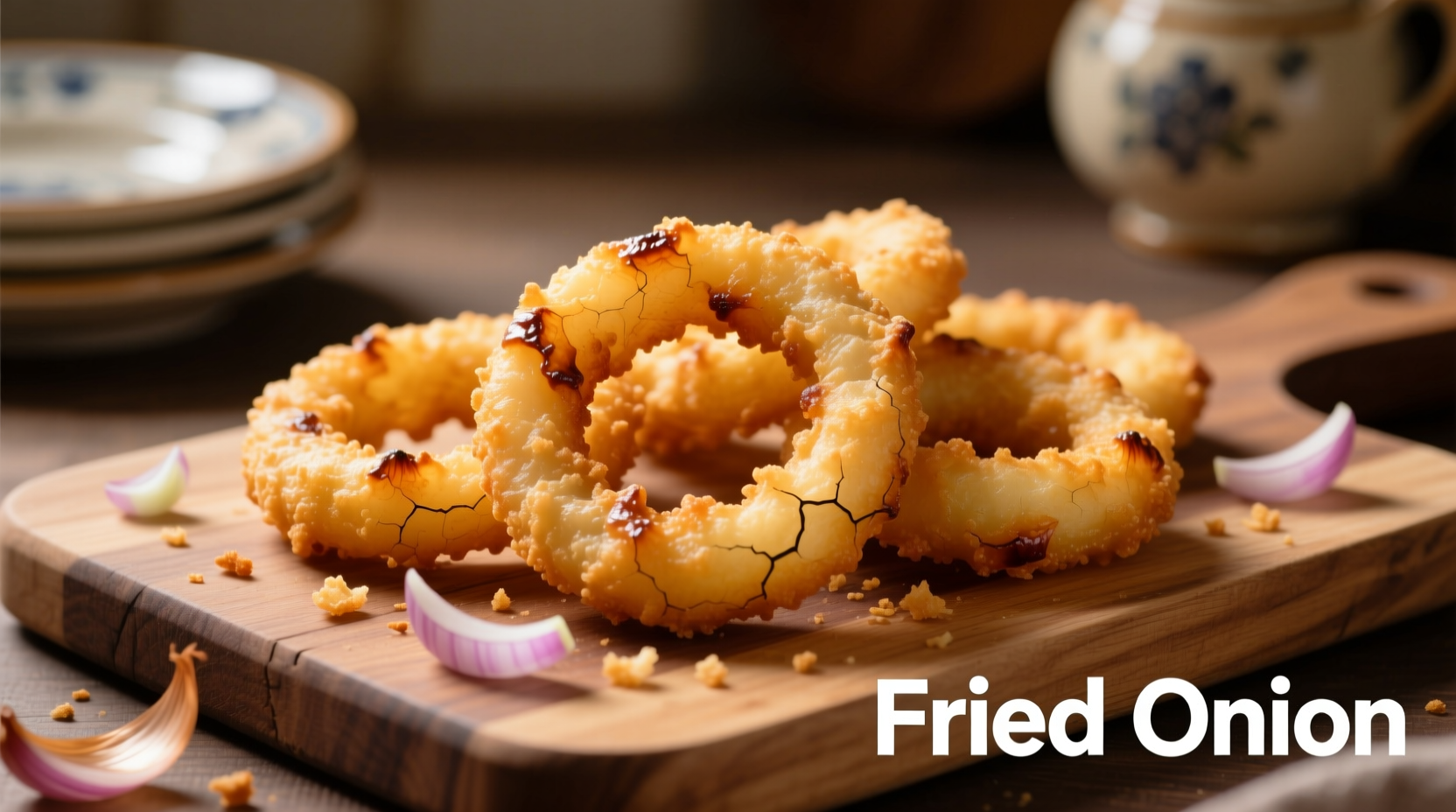Discover how to transform ordinary onions into culinary gold with this definitive guide. Whether you're topping burgers, enhancing soups, or creating signature dishes, mastering fried onions elevates your cooking from basic to extraordinary. We'll reveal professional techniques that guarantee consistent results every time—no more soggy or burnt batches.
What Exactly Are Fried Onions?
Fried onions represent one of cooking's most versatile flavor enhancers, created by slowly cooking sliced onions in oil until they lose moisture and develop crisp texture. Unlike caramelized onions (which soften and sweeten through low-heat cooking), fried onions achieve a delicate crunch while preserving their savory bite. Two primary varieties exist:
| Type | Texture | Cooking Time | Best Uses |
|---|---|---|---|
| Thinly Sliced | Crisp throughout | 15-20 minutes | Garnishes, toppings |
| Shallot Strings | Delicate, lacy | 8-10 minutes | Asian dishes, finishing touch |
The Science Behind Perfect Crispness
Understanding the transformation process prevents common mistakes. Onions contain 89% water, which must evaporate before browning occurs. When submerged in oil at the proper temperature (325-350°F), moisture escapes as steam, creating the bubbling effect you observe during initial frying. The USDA Food Safety and Inspection Service confirms this temperature range ensures proper dehydration without excessive oil absorption.
As water content decreases, the Maillard reaction begins—that magical chemical process where amino acids and sugars interact to create complex flavors and golden color. This stage requires careful attention, as the transition from perfect to burnt happens in mere seconds.

Step-by-Step: Achieving Restaurant-Quality Results
Follow this professional method for foolproof fried onions:
Preparation Essentials
- Onion selection: Yellow onions provide the best balance of sweetness and pungency
- Slicing: Use a mandoline for consistent 1/8-inch slices (critical for even cooking)
- Drying: Pat slices thoroughly with paper towels to remove surface moisture
The Frying Process
- Heat neutral oil (canola or peanut) to 325°F in heavy skillet
- Add single layer of onions (overcrowding lowers oil temperature)
- Maintain steady temperature—adjust heat as needed
- Stir occasionally with spider strainer for even cooking
- After 10 minutes, increase heat to 350°F for final crisping
- Remove when golden (not dark brown) and drain on wire rack
Avoiding Common Pitfalls
Even experienced cooks make these critical errors:
- Incorrect oil temperature: Starting too hot creates immediate browning while trapping moisture inside
- Overcrowding the pan: Lowers oil temperature, causing onions to steam rather than fry
- Insufficient drying time: Wet onions create dangerous oil splatters and uneven texture
- Using the wrong oil: Extra virgin olive oil burns at frying temperatures
According to the National Center for Home Food Preservation, proper cooling on a wire rack (not paper towels) prevents steam buildup that causes sogginess. This simple step makes the difference between restaurant-quality crispness and disappointing results.
Culinary Applications Beyond the Obvious
While topping burgers and baked potatoes remains popular, professional chefs utilize fried onions in sophisticated ways:
- Flavor base: Add to soups and stews for umami depth without additional salt
- Texture contrast: Sprinkle over creamy dishes like mashed potatoes or risotto
- Breading component: Mix with breadcrumbs for extra-crispy cutlets
- Salad enhancement: Toss with bitter greens to balance flavors
- Signature touch: Create regional variations like French oignons frits or Indian birista
Storage and Shelf Life Optimization
Proper storage maintains crispness significantly longer than most home cooks realize. The USDA FoodData Central database confirms that when stored correctly:
- Airtight container at room temperature: 2-3 weeks
- Refrigerated in glass jar: 4-6 weeks
- Freezer in single-serve portions: 5-6 months
Reviving slightly soft onions is simple—spread on baking sheet and warm in 300°F oven for 5 minutes. Never microwave, as this creates uneven texture.
Nutritional Considerations
While delicious, understanding the nutritional profile helps with portion control. Per 1/4 cup serving of homemade fried onions:
- Calories: 110
- Total fat: 5g (primarily from cooking oil)
- Carbohydrates: 15g
- Fiber: 2g
- Sodium: 5mg (vs. 300mg in commercial versions)
Commercially prepared fried onions often contain significantly more fat and sodium. Making your own allows complete control over ingredients while providing superior flavor.
Advanced Techniques for Culinary Excellence
Elevate your fried onions with these professional methods:
- Vinegar soak: Briefly soak slices in 1:4 vinegar-water solution before frying for brighter flavor
- Double-fry method: Initial low-temperature cook followed by brief high-heat finish for maximum crispness
- Spice infusion: Add whole spices (bay leaf, peppercorns) to oil for subtle flavor enhancement
- Sweet-savory balance: Sprinkle with pinch of sugar during final cooking stage for complex flavor
Troubleshooting Guide
Resolve common issues with these solutions:
- Soggy onions: Oil temperature too low—use thermometer and maintain 325-350°F
- Burnt edges: Uneven slicing—use mandoline for consistent thickness
- Greasy texture: Inadequate draining—cool on wire rack, not paper towels
- Uneven color: Overcrowded pan—fry in small batches











 浙公网安备
33010002000092号
浙公网安备
33010002000092号 浙B2-20120091-4
浙B2-20120091-4